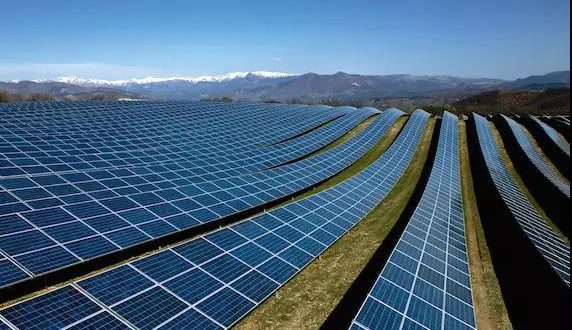GEI Insight: Economics of Solar Energy – Duck Curves
Economics of Solar Energy
Solar energy output and the demand for solar energy have a nearly inverse relationship.
Think about it – the time when solar production is high (midday) is when we don’t need power for lights. However, when solar production is low (evening), we start turning on all the lights in the house!
The rise in solar energy use, partially attributed to China’s disruption of the solar market that brought down the price of solar panels, diversified and restructured the world’s energy portfolio.
However, there’s another challenge for solar power – grid distribution, meaning, how to efficiently use all the solar energy captured, evenly throughout the day.
The Duck Curve
This ‘fill in the gap’ solution is creating a phenomenon is known as a ‘Duck Curve’ – figure 1.

Figure 1: California’s Energy Consumption and Solar Output
The curve that resembles a duck is the ‘net load’ (orange line), which comprises the supply of energy generated by all sources excluding solar.
As you can see, the net load rises in the morning (duck tail), slopes down in the afternoon (duck’s back) and increases in the evening (duck head). Now can you see the duck?
The gray line comprises only solar energy output, and as we already know, it’s the opposite of our duck curve.
Finally, is the blue line, the total load or total supply of energy produced by all sources.
The 2 Problems of the Duck Curve
This mismatch between supply and distribution leads to two energy and infrastructure-related problems – which in turn cause the ‘duck curve’ phenomenon to actually grow, see figure 5.
Reducing the Duck Curve for Good
- Storage-If there is an efficient way to store and then use the energy produced at solar peak times, we can solve the curtailment issue and reduce reliance on non-renewable sources.
- Demand-side management-Market forces can help to smooth out the duck curve, bringing balance between supply and demand. For example, Time of Use (TOU) energy charges would make electricity cheaper at non-peak times, when there is an abundance of solar energy, and, conversely, more expensive when the grid is using non-renewable energy sources.
- Inter-regional power exchange-Regional grid integration sells excess electricity produced in certain areas to areas with higher energy demands. This only solves oversupply and does not change the dependence on non-renewable energy so should be used in conjunction with one of the aforementioned solutions.
Additional reading: “Teaching the ‘Duck’ to Fly” by the Regulatory Assistance Project (RAP). RAP is an NGO that focuses on the long-term economic and environmental sustainability of the power sector.
Harrison Minter, GEI Energy and Climate Change Program Intern
[1]: http://www.caiso.com/market/Pages/ReportsBulletins/DailyRenewablesWatch.aspx
[2]: Costa Rican Electrical Institute (ICE)
[3]: http://2015.re-invest.in/presentations/02_Grid_Connected_Solar_Power/Soonee.pdf
[4]: https://www.greentechmedia.com/articles/read/hawaiis-solar-grid-landscape-and-the-nessie-curve
[5]: L. Kaufman, ‘As solar pushes electricity prices negative, 3 solutions for California’s power grid’ , Inside Climate News, 2017

